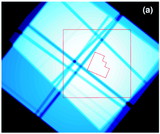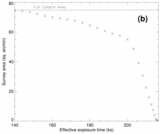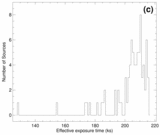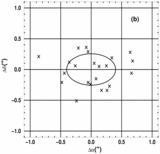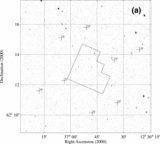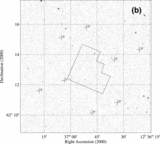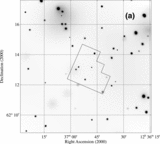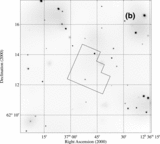Image Details
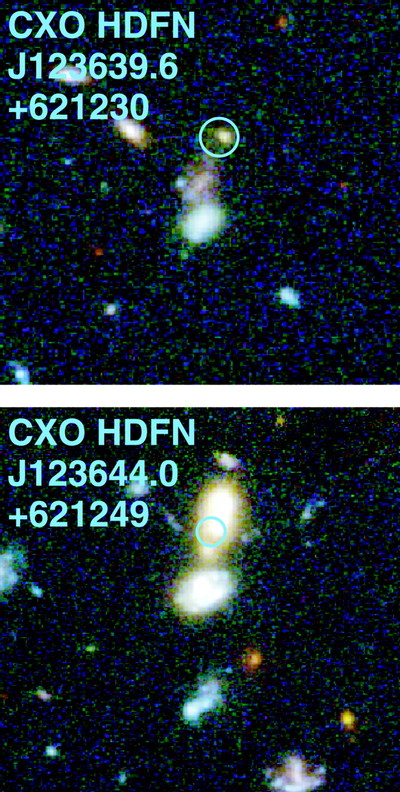
Caption: Fig. 13.
Two newly discovered X‐ray sources in the HDF‐N. CXOHDFN J123639.6+621230 is a BL AGN at ﹩z=3.479﹩. The two objects to the south of CXOHDFN J123639.6+621230 do not have spectroscopic redshifts, but their photometric redshifts of ﹩z=0.00﹩ and ﹩z=1.16﹩ (Fernández‐Soto et al. 1999) are sufficiently different to argue against interaction. CXOHDFN J123644.0+621249 is a ﹩z=0.557﹩ emission‐line galaxy that also probably contains an AGN (see § 6.1). The object to the south of CXOHDFN J123644.0+621249 is at ﹩z=0.555﹩; these two galaxies are likely interacting (see R98 for discussion). The blue circles are centered at the best Chandra positions and have diameters of 1﹩\arcsec﹩.
Copyright and Terms & Conditions
© 2001. The American Astronomical Society. All rights reserved. Printed in U.S.A.


